Electricity_Basics_Part_3__Current.pdf
Transcript:
[0m:4s] Hi I'm Josh Bloom, welcome to another video in the RSP Supply education series. If you find that these videos are helpful to you, it certainly helps us out if you could give us a big thumbs up and subscribe to our channel. In today's video, we are going to continue on in our brief series in which we are talking about the basics of electricity.
[0m:24s] In our last video, we talked about voltage. If you remember in that video, we said that voltage is simply the potential energy difference between two points on any given circuit. We also discussed how the amount of voltage is directly related to other electrical principles such as electrical charge or electrical flow, also known as current, and also the amount of resistance in a circuit.
[0m:50s] We also compare these principles that govern electricity to water and how it behaves in a pipe.
[0m:57s] If you have not already seen that video, we will link it in the description below so that you might better understand the concepts that we will be discussing in today's video.
[1m:7s] For the purpose of today's video, we will be talking about another one of the three principles we have previously mentioned:
[1m:15s] current.
[1m:16s] Current is simply the flow of electrons through a conductor, or something that is good at allowing
[1m:24s] electrical charge to pass through it,
[1m:27s] in an electrical circuit.
[1m:28s] As we have previously mentioned in our other videos in order for electrons to flow, there are a few things that need to be in place. First, they need to be in a closed circuit, or a circuit that has both a power source, that is positively charged, and somewhere for the electrons to flow to that is negatively charged within the circuit.
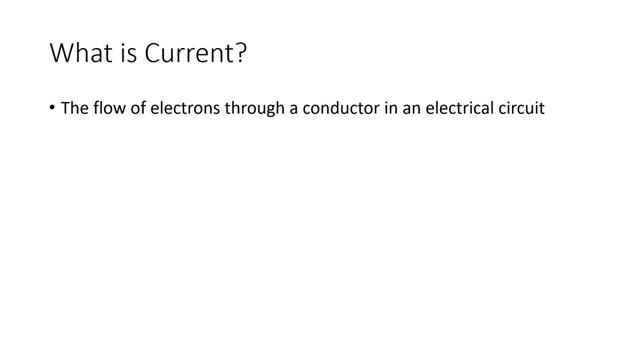
[1m:52s] If the circuit is open or in other words has nowhere for electrons to flow to, the electrons cannot move. Also, in order for electrons to flow, there needs to be something that forces them to move. This force or pressure is the voltage in an electrical circuit. When both of these requirements are met, you will see the electrons move through a circuit.
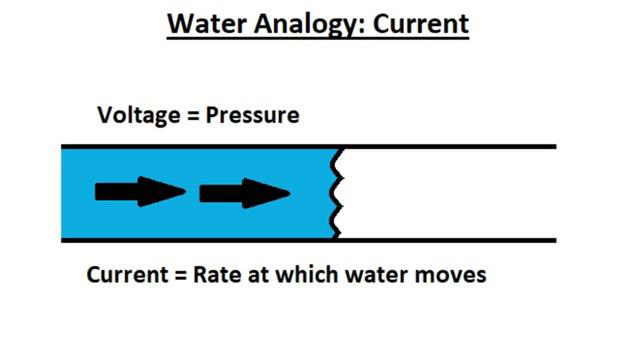
[2m:18s] How fast the electrons move or the amount of current is dependent on the amount of voltage that is present.
[2m:26s] Current is measured in amperes, commonly referred to as amps. In electrical equations, current is represented as an I.
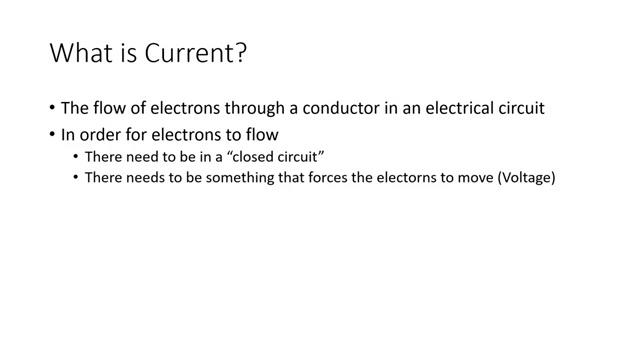
[2m:37s] If we remember in our analogy, in which we compare electricity to the behavior of water in a pipe,
[2m:44s] we talked about how electrical charge is represented as the total amount of water that is in the pipe. We also stated that voltage is represented as the amount of water pressure in the pipe. Also, we know that the amount of water, or the amount of charge, is directly correlated to the amount of water pressure, or voltage, in the pipe.
[3m:7s] Current is represented in this analogy as the water flowing through the pipe.
[3m:13s] So, as you can imagine, the water begins to flow, and the amount of water will begin to decrease in the pipe over time. Because of this, the water pressure will also begin to decrease. In terms of electricity
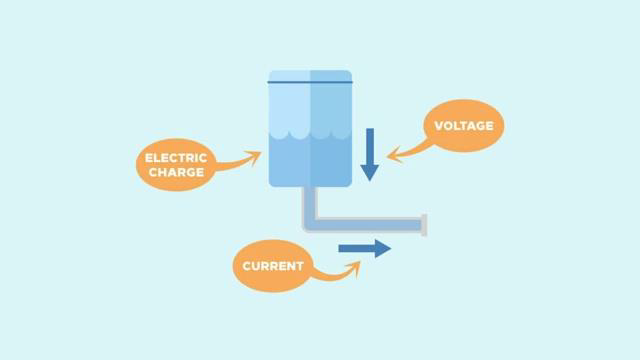
[3m:30s] as electrons flow through a conductor in a circuit, the total amount of electrical charge will begin to decrease, which in turn will begin to decrease the amount of voltage in a circuit. One thing we should keep in mind if we change the size of the pipe in which water is flowing through, it can have an impact on how much water can flow at one time. So, for example, if you have a smaller pipe, but need more water, you would have to do one of 2 things. Either increase the pressure, or voltage in electrical terms, that is being applied to the water, or you would have to increase the size of the pipe in which the water is flowing through.
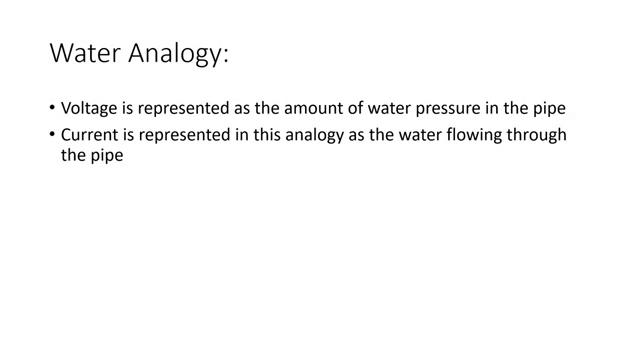
[4m:11s] The size of the pipe in this analogy is represented as electrical resistance. In short, electrical current is the movement of electrons through a conductor in a circuit.
[4m:24s] It is also important to note that the current is directly related to the amount of voltage, or electrical pressure, in a circuit.
[4m:33s] The amount of current flow is also impacted by the amount of resistance that is seen in electrical circuit,
[4m:41s] or in our water analogy, the size of the pipe the water can flow through.
[4m:46s] Resistance will be the topic of our next video, so we hope to see you there. For a full line of industrial electrical equipment and thousands of other products please go to our website. For more information or other educational videos, go to RSPSupply.com, the Internet's top source for industrial hardware. Also, don't forget: like and subscribe.




